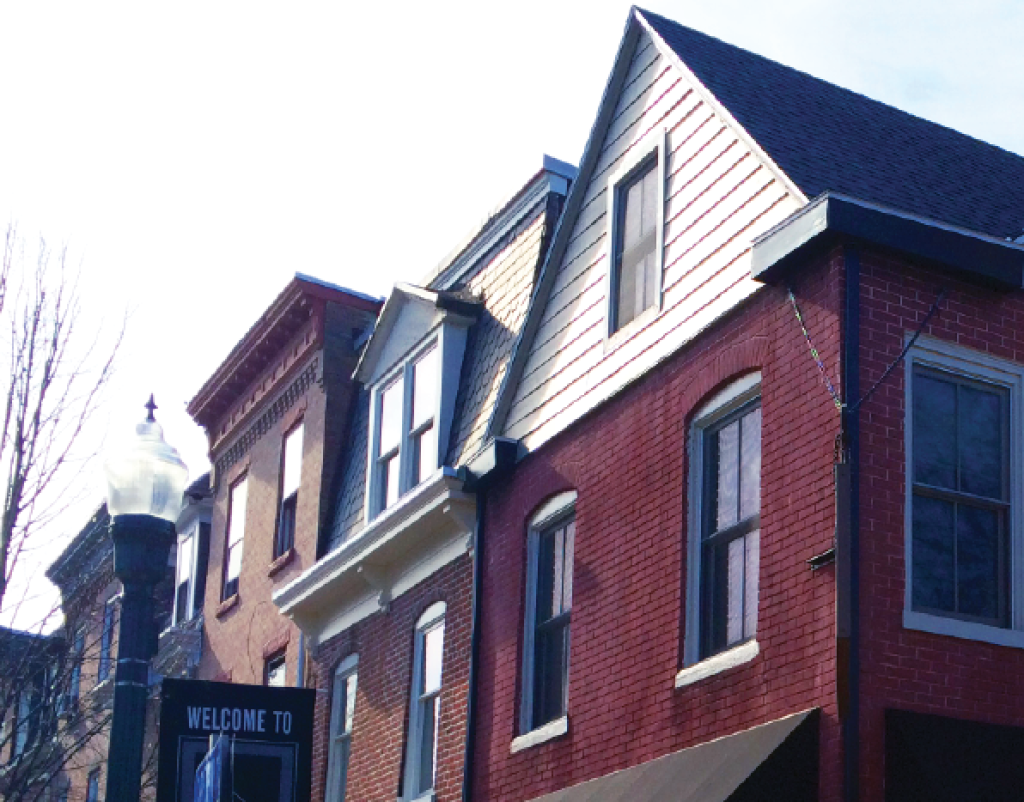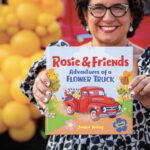 A year ago, Jared Blouch packed up his belongings and did something that, until recently, would have seemed decidedly backwards.
A year ago, Jared Blouch packed up his belongings and did something that, until recently, would have seemed decidedly backwards.
He sold his house in Mechanicsburg and moved into Harrisburg.
He was tired of the commute and traffic into the city each day, he said. So, he found a beautiful, historic house that he also thought was very affordable and started a new way of life that included—egads—walking.
“I like that everything is so close, and I don’t have to drive far,” said Blouch, who purchased on Green Street. “I can get everything I want right there.”
Blouch became so enamored with his new neighborhood that he quickly became an activist for it, joining the board of Friends of Midtown and serving as president of the Olde Uptown Neighborhood Association.
Blouch’s introduction to Midtown Harrisburg could hardly be more different than that experienced by Ray Davis, who moved there in 1986.
“I bought my house on Green Street, and I drove my mother by and she looked at me, and she looked back at the house and said, ‘Are you serious?’” he said.
Davis, a familiar licensed real estate agent in central PA, and particularly in Harrisburg, laughed as he recalled the memory.
“She had no experience with city living,” he said. “So, she put her hand on my knee and said, ‘Is it safe?’”
In those three decades in Harrisburg, Davis has seen many changes—from the transition of the plasma center on Reily Street to the current Midtown Cinema; from rows of empty buildings to the recent surge of new businesses in Midtown.
“We didn’t have anything—anything!” he stressed. “It was so different than it is now.”
Today, Midtown residents have numerous restaurants, nightspots and even a brewery among a long list of amenities just a short stroll away. In part, that’s what may be driving new interest in living in the heart of the city, said Davis.
“Comparing 2011 to 2015, there were literally twice as many sales,” he said.
In 2011, the data (price range of $50,000 to $250,000) showed that 49 houses were sold in the 17102 zip code, which includes North Street to Maclay Street and Front Street to N. 7th Street. In 2015, the same zip code totaled 99 units sold. Even more encouraging, the average time on the market for those 99 units was 87 days, just below the average of 90 days in the surrounding suburbs.
Faring Better
Wendell Hoover, Harrisburg’s other go-to agent, looked past the borders of the 17102 zip code to find that the dips and peaks of the average sales price over a six-year period told the same story.
Including data from downtown, Midtown and Uptown, the average sales price was $97,241 in 2010. In 2011, the average sales price dropped drastically to $85,339 then dropped further in 2013 to $75,058. The last two years have seen a reversal. The 2015 figures show a 22 percent increase since 2013 to an average price of $91,600.
The low numbers in 2011 were not unique to Harrisburg as the country experienced a bursting of the housing bubble. Harrisburg, however, was experiencing other challenges, financially and politically, over those years. Now, the opinion of the city has changed, said Hoover, who credited this improved perception as the main factor behind the current upswing.
“There were just so many negative things, and there were very few positive things before, so that’s the biggest trend—people have changed their viewpoint,” he said. “Whether they’re first-time homeowners or they’re investors, you need to have that confidence in the immediate market, and now a lot of people do.”
More Attractive
Hoover has been a realtor in central PA for six years and, during that time, he, too, has observed many of the changes in the city and optimistically foresees continued growth.
“Interest rates, although they might inch up, will remain relatively low, and the economy, although not good for everyone, has incrementally improved,” he said. “I don’t see much to stop this positive momentum, particularly as we get more things in Midtown.”
Hoover cited the opening of the Millworks and the expansion of the Harrisburg Midtown Arts Center as two important recent projects that have made the neighborhood more attractive to buyers.
“There are different venues I could point to, but it doesn’t necessarily have to be restaurants,” he said. “It’s just things that people can walk to.”
The desire to live in a walkable city is something that both Davis and Hoover have noticed from clients such as young professionals, first-time homebuyers and empty-nesters looking to downsize.
“I can’t put a particular amount of weight on it, but I believe the trend going forward is people wanting a house in a walkable community, and Harrisburg is definitely that,” Hoover said. “Some areas more than others, but that’s the biggest demand, particularly in Midtown. That’s a trend that I’ve seen for several years, but I’ve seen it grow in the last year or two years.”
The city’s walkability is not only attractive to potential homebuyers, but also to renters. The rental market is another facet of Harrisburg’s housing market that’s been trending up.
“The rental market was always good and remained good,” Hoover said. “Even during the time when people didn’t have the confidence in the overall market, they were at least willing to rent. They wanted to be in Midtown, they wanted to be in Uptown, but they weren’t convinced that maybe the market wasn’t going to get worse.”
And, in fact, developers have been responding to the growth in rental demand, with many new apartment buildings—particularly high-end renovations of historic buildings—coming on the market over the past couple of years. LUX, Walnut Court and COBA are a few examples of recently renovated multi-dwelling buildings. This year, both Harristown Enterprises and WCI Partners will add significant new rental inventory to downtown and Midtown.
Some of those renters eventually turn into homeowners.
“Renters who are renting upper-end properties, if they decide to stay, or when they decide to stay here, they turn into really good buyers,” Davis said. “They’re having a good experience in the city, and they want to stay.”
Both realtors also have had a growing number of clients moving to the city from larger metropolitan areas. These buyers, or renters, are attracted to Harrisburg because of the amount of space they can get for their hard-earned money compared to the cities they came from, the realtors said.
“Folks coming from those areas really help our values because they see value where natives don’t,” Davis said. “But do I see a big trend of that? I don’t know if it’s a huge trend, but it’s happening.”
What do the next five years hold? If demand continues, perhaps developers will begin to build single-family homes. The city’s new construction market—unlike the growing multi-family segment—has seen little action for many years.
“The city isn’t like Lower Paxton Township or Silver Spring Township, where they’re building new stuff all of the time,” said Davis. “[Zip code] 17102 doesn’t really have anywhere to go other than a few townhomes up at the [Broad Street] market.”
So far, Blouch appears happy with his choice to ditch “the boonies” for city life. Not only is he within blocks of places like Little Amps Coffee Roasters, Alvaro Bakery and Zeroday Brewing Co., but he’s met “tons” of people in his first year in Harrisburg.
“This works for me because I’m very social,” he said. “I’m more of a city person. I like being around other people.”





